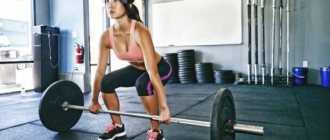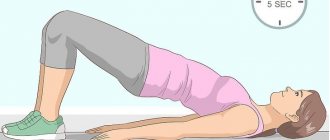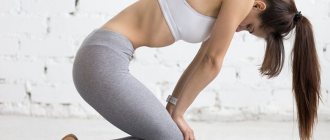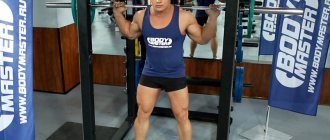Training while sick is a nightmare for athletes. They refuse to schedule proper meals, the process of water balance changes, and the disease also affects their sleep patterns, changing it for the worse. But the biggest disadvantage of being sick, whether you have a cold or the flu, is that a person is not even able to go to the gym, as the body spends all its resources to fight its immune system against the disease. Ultimately the question is, can a person exercise while exercising? After reading our answers, you might be surprised!
Is it possible to train at a temperature of 37?
When you are sick, your body mobilizes just as a country mobilizes for war. The reaction chemicals begin to work throughout the body, including in white blood cells and the cells lining blood vessels and airways. The immune system contains various natural substances called inflammatory mediators that help protect the body from infection.
Names of some of the inflammatory mediators involved in the common cold include histamine, kinins, interleukins, and prostaglandins. These inflammatory mediators cause mucus secretion and activate sneezing and coughing by stimulating pain nerve fibers.
Upper respiratory tract infections typically begin with a sore or sore throat, a chilly, hot and feverish sensation, fatigue and muscle pain, and a progression of either chest symptoms such as cough and tightness or sinus problems.
These symptoms can last from several days to several weeks. Exercise plays a role function for our body's immune system. In fact, one short workout will not suppress the immune system; on the contrary, one moderate-intensity workout can actually boost immunity in healthy weightlifters.
However, extremely long training, including low-intensity exercise and prolonged high-intensity exercise, makes the athlete's body more susceptible to infection. For example, marathon runners may have a weakened immune system for up to 72 hours after the race! Since your immune system is already primed to fight off a cold or flu, it makes sense to consider that long, intense workouts can be harmful to our bodies. However, short, intense or moderate-intensity workouts help our bodies maintain physical activity even when we are sick. In fact, statistics show that in the early stages of illness, you can feel better and stronger in just a few minutes. days before disease progression.
Is it possible to exercise with ARVI?
Mild malaise, runny nose, sore throat - is it worth going to training if you are not in the best shape? Is physical activity good for cold symptoms? Let's ask a specialist.
Alexander Filimonov, a sports training specialist, a guest expert at NL International, answered the most popular questions from social network users about the compatibility of fitness and ARVI.
Is it worth going to training if you have symptoms of a cold or have just had one?
– At the first symptoms of a cold, it is recommended to avoid physical activity in the form of training. At the very beginning of the disease, an immune reaction begins in the body: the fight against the virus or bacteria.
Firstly, with active training, the infection spreads most quickly, and therefore the disease develops more quickly.
Secondly, after training, the body will spend all its energy restoring resources (replenishing amino acids, restoring muscles), but not fighting a cold.
Thirdly, after training, your own immunity becomes significantly lower, and this, again, makes the body more vulnerable to unwanted elements.
After suffering from colds, training should be started when the body has fully recovered, after the appropriate doctor’s conclusion. Typically, this period lasts about a week after the symptoms disappear.
Runny nose, sore throat and other symptoms WITHOUT fever - is this a clear contraindication?
– It should be remembered that when visiting a fitness club, a sick person jeopardizes not only his own health, but also the health of those around him. Therefore, it is better to diagnose the body to find out the causes of the symptoms and refrain from physical activity and various contacts with people.
If a person still goes and exercises with a mild ARVI, are there rules that he must follow?
– The only rule that a sick person must follow is bed rest, a large volume of clean water and following the appropriate prescriptions of the attending physician.
What break in training will not in any way reduce the results achieved?
– As a rule, during three weeks of rest from the training process there is practically no decrease in strength indicators. Within a couple of workouts, the muscles return to their previous tone and take on shape. As for cardiorespiratory endurance, a decrease should be expected. In other words, it will be much more difficult to overcome the usual load on cardio equipment, because in most cases the respiratory system suffers from colds. But, nevertheless, this process is completely trainable, and during the training week all indicators return to normal.
After the acute phase has passed, when can you resume training?
– You should start training only after the body has completely recovered and all symptoms have disappeared.
Are there any peculiarities of training after illness?
– When all the doctor’s recommendations are followed, and a person receives permission to visit the fitness club, one should adhere to the general recommendations when training.
The first is to start with a light load on cardio equipment, 10-15 minutes is enough to start. The second is to exclude active training with high intensity (step aerobics, cycling, hot iron, functional training). Third, when doing strength training on machines, it is recommended to limit the time of the training process to 30 minutes, using light weights, excluding work in sets. Accordingly, the pulse zone during training should be within 120 beats per minute. In this mode, it is better to train within a week from the moment you return to the gym.
How to make sure that the body has coped with the infection and is ready for serious stress?
– A general (extended) blood test allows us to determine the state of the body if we are talking about a common cold without complications. In other cases, additional tests are prescribed by the attending physician.
RULES FOR PERFORMING AN EXERCISE DURING ILLNESS.
In the Gym: If you have a cold, sore throat, sneezing, cough and runny nose, then you can afford to do a few sets of low-speed, moderate to high-intensity strength exercises. You may notice that your muscular endurance is poorer, your breathing becomes faster and you get tired more quickly, so keep your workouts short. Your goal is 5-8 reps at 70-80% of your max load for 3 sets/exercises. Your workouts should be about 30 minutes long.
Exercising for colds: yes or no
Doctors and trainers advise against exercising if you have cold and flu symptoms.
Firstly, training when you have a cold is a real test for the body. “If you have a fever, runny nose or cough, you can forget about the normal functioning of the cardiovascular system,” notes Stanislav Lysakovsky , master trainer of the X-Fit group programs in Russia . — If you feel normal during a fitness class, a person’s body temperature can rise to 38.5˚C. If you come to training with symptoms of ARVI, you complicate the work of your heart.”
And even if you just have a sore throat, you shouldn’t go to training either - this symptom indicates an inflammatory process in the body. This means that you still won’t be able to train fully.
Secondly, exercising while sick is not beneficial. “When we are sick with ARVI, all the body’s forces are spent fighting the infection,” says Alexander Kolesov, head of the rehabilitation department of the MEDSI Clinical Diagnostic Center on Krasnaya Presnya, sports medicine doctor, physical therapy doctor, manual therapy doctor . — Training in this state is difficult mentally and physically, they take place at an increased heart rate and are catabolic in nature. That is, the muscles will not only not grow after them, but may even be “destroyed” in order to provide the body with energy to perform exercises. This means that the effect of the training will be negative.”
Thirdly, by attending training while sick , you risk complications. “When the body is weakened by the virus, fitness classes can intensify the manifestations of the disease and complicate its course, since increased blood flow can facilitate the penetration of the virus into other organs and tissues, which will cause additional inflammation in them,” says Alexander Kolesov. “In addition, against the background of a decrease in general immunity, a secondary infection may occur or one’s own opportunistic microflora may cause a new disease. This is especially dangerous because the damage can affect vital internal organs, such as the heart (myocarditis) or kidneys (glomerulonephritis, pyelonephritis), which is fraught with chronic diseases and a ban on sports even after recovery.”
Yes, and fitness goals - losing weight, pumping up, becoming more flexible - cannot be achieved in classes with ARVI, flu, sore throat and any other viral disease. “During illnesses, the immune system draws on the body’s resources in order to quickly defeat the infection. And during training you need a lot of energy. Running, strength and functional loads, Pilates, mind&body classes - they all consume your energy both during training and after for recovery. It turns out that you are trying to “keep up with two birds with one stone” - to pump up and get healthy, but you will not succeed in either,” adds Stanislav Lysakovsky.
WHEN YOU SHOULD NOT EXERCISE
You should avoid exercising if you have a fever, severe congestion, symptoms of a stomach infection, or the flu. So training should not even be a question, as this will only suppress your immune system. In this state, it is better to get additional rest for the body. Numerous studies have shown that powerful immune activators are released and many immune functions are significantly enhanced during deep sleep. In addition, you need to provide your body with plenty of fluids (without alcohol) and amino acids. As for minimal physical activity, light cardio (walking outside to get some fresh air) will not harm you and will help you feel better. If you are on the mend, you can do a couple of light, low-intensity exercises at home.
Are you feeling better? Yes, you should train while sick for the first week to cope with the chills and cold, but you should reduce the intensity of your training and stay within 70% of your maximum effort. However, you will likely feel weak as your body regains its state of balance.
You can also view the full range of sports nutrition on our website
Is it possible to exercise at home with a cold?
First, watch yourself. Symptoms when it is better not to think about exercise:
- elevated temperature;
- dizziness;
- drowsiness and body aches;
- heaviness in the limbs;
- heavy breathing, severe cough and runny nose.
But if these symptoms have subsided, you don’t need to do hour-long workouts - start with exercises and a light warm-up. Exercise no more than 15-20 minutes.
It is better to distribute your workouts 2-3 times during the day. In total you will get about an hour of activity, which is quite good considering the illness.
Of course, we do not recommend self-medication, and if serious symptoms appear, you should consult a doctor. You can also clarify the possibility of training with him. After all, only a specialist can say for sure in each specific case.
If you decide to study fully at home:
- avoid hypothermia, do not work in a room with a window wide open (open the window in the next room for fresh air);
- do not overwork and pay attention to body signals; excessive sweating may be a sign that it is better to stop;
- Make sure your heart rate does not exceed 120-130 beats per minute.
FLU CAUTION!
But if you are sick with the flu, you should definitely stop playing sports. Influenza is a type of acute respiratory viral infection with a more severe course of the disease and possible complications. The flu is accompanied by fever, severe weakness, and high fever. Fever is a clear contraindication for sports. If you load the body at a temperature above 37.5, this can lead to complications. The heart, lungs, and kidneys are most often affected as complications.
Share what you see with your friends!
What happens in the body during ARVI
Fever, runny nose, cough are signs that pathogenic microbes have entered the body. “Elevated body temperature means that microorganisms that cause respiratory diseases have entered the blood and began to circulate throughout the body, choosing where to settle,” comments Natalya Polenova. — A rise in body temperature leads to increased heart rate and respiratory movements, and loss of fluid from the surface of the body and mucous membranes. Symptoms of intoxication develop, which any additional load only aggravates. We are no longer talking about any muscle growth, an anabolic process (which requires additional energy): the body devotes all its strength to fighting the infection.”
But despite this, some fitness fans still strive to train in this state.
Playing sports when you are sick - dangers and disadvantages
Even if you have a mild cold without complications, this in itself causes an increase in cortisol levels. If you exercise while you are sick, you most likely will not be able to achieve a positive effect from your training—with high cortisol, there can be no increase in strength or muscle growth.
Among other things, in the early stages of the disease, symptoms may be weakened - and exercise will only worsen them. You can understand that you are fully ill only when your body temperature rises sharply, chills, body aches and muscle pain appear.
Final recommendations
On the one hand, research suggests that moderate exercise does not aggravate the course of a cold or mild acute respiratory viral infection. On the other hand, these studies show that colds have a negative impact on the body's physical performance.
In turn, in case of severe infections and flu, training is definitely not recommended - they can aggravate the course of the disease. Plus, if you exercise at a gym or group training studio, you could infect those around you.
***
New Fitseven materials, 5 times a week - in telegram:
- fit7seven
You can only exercise if you have a cold if you are sure that you have a mild infection. The workouts themselves should be short, and your heart rate should not exceed 120-130 beats per minute - you literally shouldn't let yourself sweat.
Scientific sources:
- The effect of exercise training on the severity and duration of a viral upper respiratory illness, source
- Should you exercise with a cold or flu?, source
Can I go for a light workout?
Unfortunately no. “When ARVI and influenza manifest themselves, any training is prohibited. Even stretching, yoga or roller flexing can backfire. Wait until you have fully recovered and your doctor gives you permission to start training. Take care of your health, it is priceless,” warns Alexander Kolesov.
Do you feel like you're getting sick? Give up sports. “If you begin to experience symptoms of the disease, I would advise you to refrain from any physical activity and devote your free time to a walk in the park or health procedures,” notes Stanislav Lysakovsky. — Don’t worry, most of the indicators will remain at the same level for a certain amount of time. Muscles lose their strength after 2 weeks of lack of targeted training, endurance decreases after 3 days, but it will not be difficult to restore the level already achieved. And with a balanced diet and a healthy regimen, your figure will practically not suffer due to a temporary decrease or lack of exercise.”
Focus on restoring your health: rest, drink plenty of warm fluids, ventilate the room more often, follow your doctor's recommendations. You’ll get back to fitness later.
It is very important to eat a balanced diet for faster recovery. “To fight infection, it is necessary to build immunity, antibodies, and therefore eat protein. It is clear that during intoxication, appetite is reduced, and volitional efforts will have to be made. Let me remind you that protein is not only fried steak, but also yogurt, cottage cheese, omelet, and just egg white. Any of these products, in combination with competent drug treatment, sufficient water consumption and a gentle regimen, will help quickly defeat the disease,” notes Natalya Polenova.











